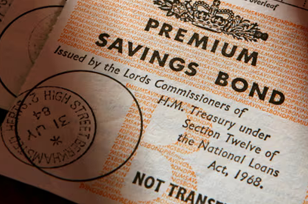What is a Help to Save Account?
A Help to Save account is a savings account offered by the UK government designed to help individuals with lower incomes build a savings habit.
National savings and investments (NS&I) holds help to save account funds and you are able to manage the account online through .GOV or via the HMRC app which is downloadable for free.
It is a valuable tool for those who want to save for future expenses, emergencies or other more longer term financial goals.
A Help to Save account provides a range of benefits and incentives to encourage regular saving including:
- A 50% savings bonus.
- Tax free savings income.
- Flexible deposits.
- No fixed period restrictions.
Help to Save accounts offer a unique opportunity for individuals with lower incomes to build some savings to improve their financial future.
To make the most of your Help to Save account it’s essential to understand the limits and restrictions associated with the account.
By taking advantage of the generous savings bonus and reading the tips outlined in this guide you can make the most of your Help to Save account and watch your savings grow over time.
Who is eligible for a Help to Save Account?
Help to Save accounts are available to individuals who meet certain eligibility criteria.
To be eligible you must:
Firstly be a resident of the UK unless you are employed overseas as a crown servant or member of the MOD.
- Be currently receiving universal credit and have earned £722.45 or more in the last monthly assessment period from employment OR
- Be entitled to working tax credit and receiving working tax credit OR
- Be entitled to working tax credit and also receiving child tax credit.
- Have a UK bank or building society account so you can make and receive payments.
If you meet the eligibility criteria and successfully open a Help to Save account it will remain active for the entire four year term.
If your circumstances change after a successful application it doesn’t matter because eligibility is determined on the day of your application only.
If you apply and you’re not 100% sure if you qualify your eligibility will be assessed as part of the help to save application process.
This should mean you aren’t given an account without meeting all of the Help to Save requirements.
How to open a Help to Save Account
Opening a Help to Save account is typically a simple process.
You don’t have to worry about submitting any documents because HM Revenue & Customs (HMRC) will evaluate your eligibility for you.
Follow these steps to get started:
Check your eligibility: Ensure that you meet the eligibility criteria mentioned above.
Apply online: Visit the official Help to Save website and complete the online application form. You will need to provide your personal details and information about your eligibility for the account.
Set up a direct debit: Once your application is approved, you will need to set up a direct debit to make regular deposits into your Help to Save account. Decide on a suitable amount to save each month and set up the direct debit accordingly.
Start saving: Congratulations! You are now ready to start saving for your future financial goals. Make regular deposits into your Help to Save account and watch your savings grow.
Help to Save offers assistance to individuals who are unable to access digital services ensuring that they receive the necessary support.
To access this service you can dial 0300 322 7093 during the hours of operation from Monday to Friday, 10am to 6pm.
What happens after I have applied for a Help to Save account?
Upon opening your account you will be provided with an account number and sort code allowing you to make your saving deposits.
HMRC will also send you a welcome pack to further assist you in navigating your help to save account.
Four year Help to Save Account limit
Your Help to Save account will automatically be closed four years after its opening. Once closed, reopening the account or opening another Help to Save account will not be possible.
You will be able to retain the funds in your account after it closes but if you wish to close your account before the four year period ends you will forfeit your upcoming bonus and will not have the option to open a new account.
Are Help to Save Account savings taxable?
In a Help to Save savings account individuals with low incomes can save without paying any taxes on those funds.
This account is specifically designed to assist low income earners in saving more money so income tax is not deductible.
The benefits of Help to Save accounts
There are several benefits to opening a Help to Save account including:
Savings bonus: Help to Save accounts offer a generous savings bonus of 50% on your savings, up to a maximum of £1,200 over four years.
This means that for every £1 you save, you will receive a 50p bonus.
Bonus year 2:
The first bonus is for the initial two years and is awarded based on the maximum balance you maintained in the account throughout that time period, rather than the balance at the end.
Bonus year 4:
The second and final bonus is paid at the end of year four and is based on the difference between the highest balance in year three and four and the highest balance from the first two years.
In order to receive the second bonus it is essential that the highest balance in years 3 and 4 exceeds the highest balance in years 1 and 2. Failure to meet this requirement will result in ineligibility for the second bonus.
Tax free savings: The interest earned on your Help to Save account is tax free allowing you to maximise your savings without worrying about tax implications.
Flexible deposits: You can deposit any amount into your Help to Save account, up to a maximum of £50 per month. This flexibility allows you to save according to your financial capacity.
Encourages regular saving: Help to Save accounts are designed to promote regular saving habits. By making consistent deposits, you can benefit from the savings bonus and watch your savings grow over time.
Easy access to funds: Unlike other long term savings options, you can access your funds whenever you need them. This makes Help to Save accounts a convenient and flexible savings option.
How much can you save in a Help to Save account?
Help to Save accounts allow you to save up to a maximum of £50 per month. This means that over the course of four years, you can save a total of £2,400.
The government bonus is calculated based on your savings, up to a maximum of £1,200. To receive the maximum bonus, you would need to save £2,400 over the four year period.
Help to Save withdrawals and repayments
While Help to Save accounts offer flexibility it’s important to note that early withdrawals may impact your eligibility for the savings bonus.
Withdrawing funds does not affect your eligibility for future help to save bonuses.
Can I transfer funds from another savings account?
No, you cannot transfer funds from another savings account into your Help to Save account.
The scheme is designed to encourage new savings and does not allow transfers from existing accounts.
Can I open multiple Help to Save accounts?
No, you can only open one Help to Save account per individual. Opening multiple accounts is not permitted under the scheme.
What if I need to access money from my Help to Save account?
If you find yourself in need of accessing your funds you have the flexibility to withdraw your cash immediately which is not the case with other types of saving accounts.
This means that there is no need to worry about your cash being inaccessible or locked away.
Cash withdrawals from your Help to Save account can only be made to a designated bank account and after you have requested a withdrawal you should see your money in around three working days.
What happens to my Help to Save account once four years have passed?
Once four years have elapsed your Help to Save account will be terminated automatically. The funds that you have saved in the account and any final bonus payment will be deposited into your designated bank account.
Tips for making the most of your Help to Save Account
To maximise the benefits of your Help to Save account, consider implementing the following tips:
Set realistic savings goals:
Before opening a Help to Save account take some time to set realistic savings goals.
Consider your financial situation and determine how much you can comfortably save each month.
Setting achievable goals will help you stay motivated and on track with your savings.
Automate your savings:
To ensure consistent deposits into your Help to Save account, consider automating your savings.
You have the option to set up a standing order or direct debit to transfer funds from your main bank account to your Help to Save account on a regular basis.
This will eliminate the temptation to spend the money and make saving effortless.
Track your savings progress:
Regularly monitoring your progress can help you stay motivated and on top of your savings.
Your Help to Save account let’s you keep track of your deposits, bonus earnings, and overall savings growth.
This will give you a clear picture of your financial progress and help you adjust your saving strategies if needed.
Help to Save Account support
If you are encountering difficulties when attempting to apply online, you have the option to contact HMRC’s Help to Save service at 0300 322 7093 (available Monday to Friday, from 10am to 6pm).
It is important to have your national insurance number ready before making the call because you will be asked for it as part of your account security.
For more internet based information on Help to Save accounts and other financial guidance, check out these helpful resources:
MoneyHelper – Help to Save Account
Government Help to Save Scheme
Citizens Advice – Help to Save Accounts
What is the personal savings allowance?
The personal savings allowance serves as a tax-free amount that encompasses the interest earned from personal savings.
It represents the maximum sum one can receive in interest without being required to pay income tax.
The personal savings allowance or PSA value varies depending on the highest tax rate applicable to your income.
It’s important to note that the starter rate of savings is also applicable to individuals with lower earnings.
The majority of individuals fall into the basic tax rate category which allows for tax free interest earnings of up to £1000 per tax year.
For those classified as higher rate taxpayers the savings allowance decreases to £500 per tax year.
Tax free savings and investments
For people who don’t qualify for a help to save account or if you’ve come to the end of the four year period it’s worth looking at other tax free products and accounts which might allow you to grow your money without worrying about taxes.
By understanding the complexities of tax on savings and investments, you can make informed financial decisions that align with your (and your families) goals and circumstances.
Whether you choose tax free savings options like ISAs, explore pension contributions for tax relief, or navigate the rules surrounding dividends, staying informed is the key to making the most of your financial future.
We’ve listed below some of the options which can provide opportunities to maximise your savings and investments while reducing your tax liability or are tax free.
Individual savings accounts (ISAs)
One of the most popular tax free savings options is the individual savings account (ISA). ISAs offer complete freedom from income tax on the interest earned, regardless of the amount.
In the 2023-24 tax year the ISA allowance is £20,000 per adult.
You can choose between cash ISAs, stocks and shares ISAs, innovative finance ISAs, and specific ISAs like the Help to Buy ISA and the lifetime ISA.
Each type of ISA has its own rules and benefits, making it important to explore the options and choose the one that suits your financial goals.
NS&I Premium Bonds
National Savings & Investments (NS&I) offers a range of tax free products, including cash ISAs and Junior ISAs.
However, one unique option they provide is NS&I premium bonds. The winnings from premium bonds are also tax free.
You can invest up to £50,000 in premium bonds per person and have the choice to either receive the winnings each month or reinvest them to buy more bonds.
This option can be attractive for those looking to grow their savings while enjoying the thrill of potential winnings.
Pensions and tax relief
Saving into a pension not only helps secure your financial future but also offers tax benefits. When you contribute to a pension, you may be eligible for tax relief.
Tax relief means that some of the money you would have paid as income tax goes into your pension pot instead.
The amount of tax relief you receive on your pension contributions depends on the highest rate of income tax you pay.
This tax advantage can make pensions an attractive option for long term savings and retirement planning.
Savings and money management
Remember the key to successful saving is consistency and perseverance but saving is only part of the money management mix most of us have to think about.
With a help to save account you have the opportunity to build a stronger financial future but debt in one form or another sometimes has to take priority over saving for the longer term.
Our money section has guides and calculators that cover a number of the most common money related topics like mortgages, credit cards, personal loans and energy.
You can use the budget planner to work out what you can and can’t afford and the car cost calculator to find out the true cost of running a particular type of car.
Remember you can consult with a tax professional or financial advisor for personalised advice tailored to your specific situation.














